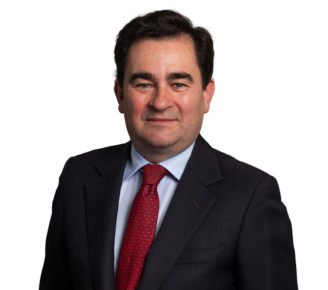“In short, what has become known as the Arkin cap is, in my judgment, best understood as an approach which the Court of Appeal in Arkin intended should be considered for application in cases involving a commercial funder as a means of achieving a just result in all the circumstances of the particular case. But I do not think that it is a rule to be applied automatically in all cases involving commercial funders, whatever the facts, and however unjust the result of doing so might be.”
Yesterday, Mr Justice Snowden handed down judgment on the application of the successful Defendants against the Claimant’s commercial funder, ChapelGate, for a non-party costs order under s. 51 of the Senior Courts Act 1981.
Justin Fenwick KC and Ben Smiley appeared for the defendant Administrators; Nicholas Bacon KC appeared for the defendant Dunbar Assets plc; and Robert Marven KC appeared for ChapelGate. The decision and its implicates are summarised by Benjamin Fowler.
Following the handing-down of judgment on 11 April 2018, the Defendants’ total costs claimed were in the region of £7.5 million. The Claimant had been ordered to pay £3.9 million by way of payments on account but had made no payments to date, prompting the s. 51 application.
ChapelGate accepted that a non-party costs order should be made against it and that it should be on the indemnity basis, as per the order made against the Claimant, Ms Davey, following the dismissal of her claims against the Defendants which included serious allegations of breach of duty and improper conduct tantamount to dishonesty (this was conceded in light of the decision of the Court of Appeal in Excalibur Ventures LLC v Texas Keystone Inc (No. 2) [2017] 1 WLR 2221).
Section 51 application – Issues
There were two issues which the Court had to address:
- First, whether the liability of ChapelGate to the Defendants should be for all of the costs, or only those which the Defendants incurred after 23 December 2015, the date of the Funding Agreement between ChapelGate and the Claimant.
- Secondly, the more contentious issue – whether the order for costs against ChapelGate should be ‘capped’ by reference to the principles set out by the Court of Appeal in Arkin v Borchard Lines Ltd (Nos 2 and 3) [2005] 1 WLR 3055 (“Arkin”).
Issue 1: Time limit on Liability
By the time the Claimant had entered into the funding arrangement with ChapelGate on 23 December 2015, some £4.33 million had already been incurred by the Defendants in the claim.
Nevertheless, the Administrators maintained that ChapelGate’s liability ought not to be time-limited to the period commencing with the funding arrangement, principally because it was (in effect) the sole beneficiary of the Claimant’s claims against the Defendants. They relied upon the order of priority of the application of the case proceeds under the funding arrangement, whereby ChapelGate would benefit first, and given the value of the Claimant’s claims, there was unlikely in practice to be any residue for the Claimant. The Administrators submitted that ChapelGate stood to benefit from all the work done from the start of the litigation, and hence it should be liable for all the adverse costs without limitation of time, drawing an analogy with an assignee of a claim who becomes the litigating party by substitution.
The judge rejected this analogy (noting that an assignee would become the party primarily liable unlike a funder whose liability arises under s. 51) and held that in any event the matter was covered by authority, namely the first instance decision of Christopher Clarke LJ in Excalibur, in which he concluded that there needed to be a causal connection between the involvement of the non-party and the incurring of the costs in question. Having referred to the decisions of the Court of Appeal in Hamilton v Al Fayed [2003] QB 1175 at [54] and of the Privy Council in Dymocks Franchise System (NSW) Pty v Todd [2004] 1 WLR 2807 at [20] in support of this requirement, Christopher Clarke LJ held (at [151]) that it was not appropriate to make the funders liable even where they were “in a sense, inheritors of the work of others”.
As such, the judge confined the costs order against ChapelGate to costs incurred after 23 December 2015.
Issue 2: the Arkin Cap
Mr Justice Snowden set out a detailed analysis of the decision in Arkin, and the doubts cast upon it in both authority (including the decision of Foskett J in Bailey v GlaxoSmithKline UK Limited [2018] 4 WLR 7, in which he rejected the argument in a security costs application that the Arkin cap would necessarily be applied at the end of trial) and commentary (including Sir Rupert Jackson’s Final Report of the Review of Civil Litigation Funding in December 2009, recommending that the extent of the funder’s liability should be a matter for the discretion of the judge in the individual case).
There were three areas of dispute between the parties on the application of the Arkin cap:
- First, the judge addressed the question of whether the Arkin cap was a rule or principle of general application, or whether it was only an approach which in no way fettered the court’s discretion under s. 51 and could be distinguished in an appropriate case.
- Second, if the Arkin cap was a rule of principle of general application, whether the instant case fell into the category of financing which was “otherwise objectionable” within the meaning of the expression used in Arkin (at [40]) so as to justify the cap not being applied.
- Third, if the cap was not automatically applied, whether it should be applied on the facts of the instant case.
In reaching the conclusion that the Arkin cap was an approach which could be used in an appropriate case but did not limit the court’s discretion in any way (the conclusion set out at [89] and quoted above), the judge carried out the following analysis of the authorities:
- The starting point was the statement of principle by Lord Brown in the decision of the Privy Council in Dymocks (at [25]) which established that the imposition of a third party costs order under s. 51 was a matter of discretion to be exercised in light of the circumstances of the individual case, taking into account the various competing considerations (including the distinction between ‘pure’ funders and commercial funders).
- The Court of Appeal in Arkin expressly followed and adopted the approach of Lord Brown in Dymocks.
- Although the Court of Appeal in Arkin proposed a particular approach to cases involving commercial funders, they should not be taken to have intended to prescribe a rule to be followed in all cases involving commercial funders. Rather, the court was setting out an approach that it envisaged might commend itself to other judges exercising their discretion in similar cases in the future.
- There was no subsequent authority in which the Arkin cap had been treated as a principle to be applied automatically, including Excalibur or Sir Rupert Jackson’s Report.
The judge did not consider that the “otherwise objectionable” criterion was applicable save in cases where the funding in question was champertous. He found that this was the context of the statement at paragraph [40] in Arkin; the Court of Appeal was not intending to refer to or create any other, or undefined, category of case.
Finally, the judge considered the various factors of the case in order to decide whether or not a cap should be applied. The following factors led the judge to conclude that – balancing the principle that the successful party should have its costs and enabling commercial funders to continue to facilitate access to justice – this was not a case in which to apply the Arkin cap:
- ChapelGate approached its involvement throughout as a commercial investment.
- The conduct of the Claimant had warranted an order for indemnity costs. ChapelGate had the opportunity to investigate and take a view on the claim (after pleadings, discovery and witness statements) and there was no principled basis on which the funder should be permitted to disassociate itself from the conduct of the Claimant.
- The Claimant would have been unable to pay any substantial costs order made against her, which would always have been far in excess of the sum ChapelGate proposed to invest.
- ChapelGate had halved its commitment to the funding of the litigation from £2.5 million to £1.25 million, while retaining the same share of the recovery. They were focused on their own self-interest in the commercial venture, with no correlation between the sums invested and the costs to which the Defendants were exposed.
- By taking priority in any recovery, ChapelGate were – as per the wording adopted in Dymocks – a “real party” with the primary interest in the claim. Access to justice came a clear second to their receiving a significant return on their commercial investment.
- There was no evidence to support the submission that commercial funders would be discouraged from providing funding in the future (which ran contrary to the observations of Sir Rupert Jackson in his Report that experience in other jurisdictions suggested that litigation funders were not deterred by the potential of full liability for adverse costs).
Implications of the decision
The clarification provided by Mr Justice Snowden that the Arkin cap is not a rule or principle has been anticipated by many in the ten years since Sir Rupert Jackson’s 2009 Report. Since the decision in Arkin in 2005, the litigation funding market has enjoyed significant growth and profited from the benefits of a supposed ‘cap’ on liability; it may therefore be better placed as a whole to endure the loss of this protection. How the market will respond remains to be seen; perhaps with an increased reliance on ATE insurance; and perhaps with more precise and defined scope for funding (closer to the facts of Arkin).
Disclaimer: this article is not to be relied upon as legal advice. The circumstances of each case differ and legal advice specific to the individual case should always be sought.
© Benjamin Fowler 4 New Square Chambers, April 2019.








